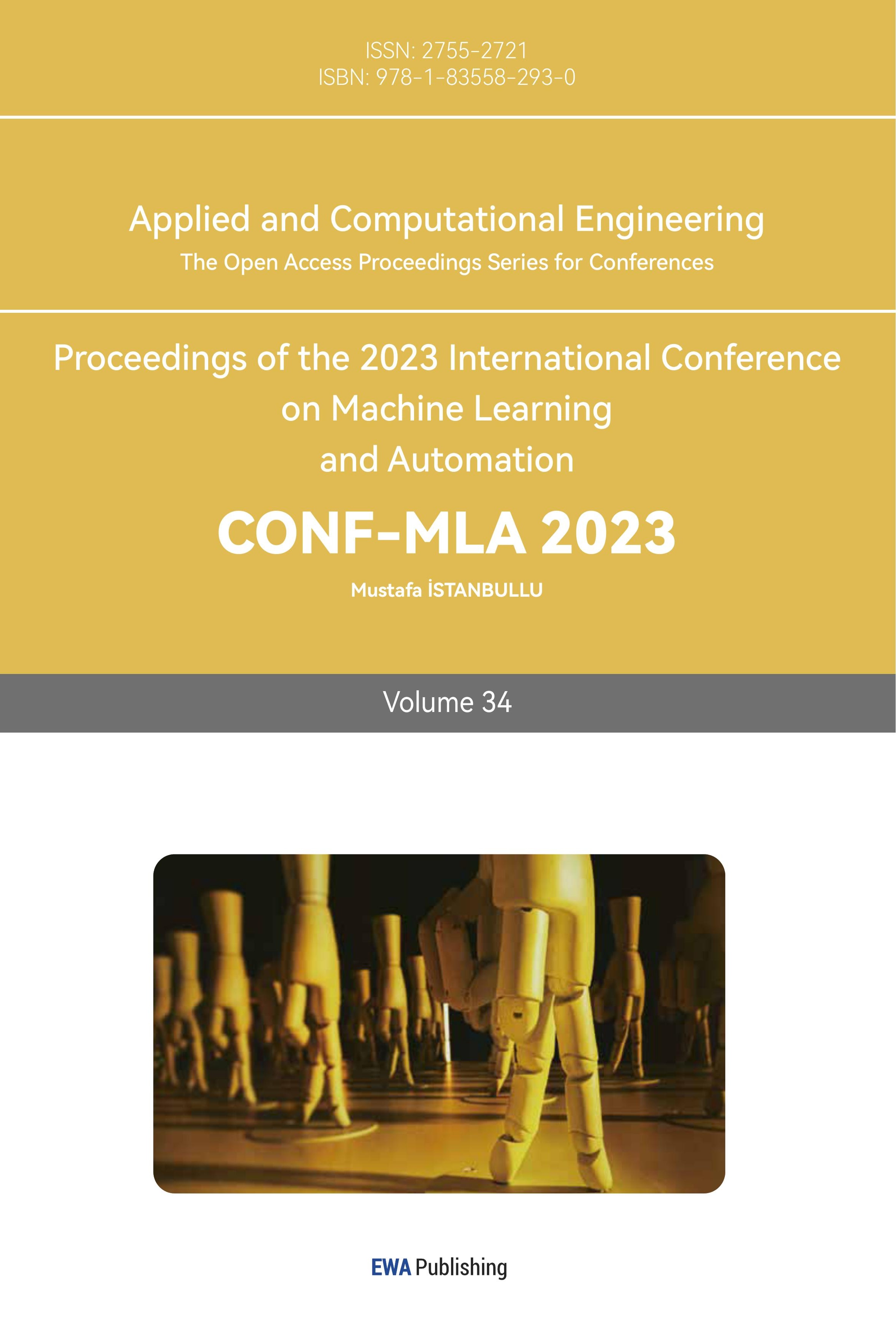References
[1]. S Campbell R., Fires in U.S. Industrial or Manufacturing Properties (2018), National Fire Protection Association
[2]. Z. Zhang and Y. Hu, "Video Smoke Detection Based on Convolution Neural Network", 2017 International Conference on Computer Technology Electronics and Communication (ICCTEC)
[3]. A. Q. Nguyen, H. T. Nguyen, V. C. Tran, H. X. Pham and J. Pestana, "A Visual Real-time Fire Detection using Single Shot MultiBox Detector for UAV-based Fire Surveillance," 2020 IEEE Eighth International Conference on Communications and Electronics (ICCE), Phu Quoc Island, Vietnam, 2021, pp. 338-343, doi: 10.1109/ICCE48956.2021.9352080
[4]. Li, P., & Zhao, W. (2020). Image fire detection algorithms based on Convolutional Neural Networks. Case Studies in Thermal Engineering, 19, 100625. https://doi.org/10.1016/j.csite.2020.100625
[5]. K. Muhammad, J. Ahmad, I. Mehmood, S. Rho and S. W. Baik, "Convolutional Neural Networks Based Fire Detection in Surveillance Videos," in IEEE Access, vol. 6, pp. 18174-18183, 2018, doi: 10.1109/ACCESS.2018.2812835
[6]. J. Suresh, "Fire-fighting robot," 2017 International Conference on Computational Intelligence in Data Science (ICCIDS), Chennai, India, 2017, pp. 1-4, doi: 10.1109/ICCIDS.2017.8272649
[7]. S. Albawi, T. A. Mohammed and S. Al-Zawi, "Understanding of a convolutional neural network," 2017 International Conference on Engineering and Technology (ICET), Antalya, Turkey, 2017, pp. 1-6, doi: 10.1109/ICEngTechnol.2017.8308186
[8]. Muhammad, K., Ahmad, J., & Baik, S. W. (2018). Early fire detection using convolutional neural networks during surveillance for effective disaster management. Neurocomputing, 288, 30–42. https://doi.org/10.1016/j.neucom.2017.04.083
[9]. Zhang C, Alexander BJ, Stephens ML, Lambert MF, Gong J. A convolutional neural network for pipe crack and leak detection in smart water network. Structural Health Monitoring. 2023;22(1):232-244. doi:10.1177/14759217221080198
[10]. Seo, S.-K., Yoon, Y.-G., Lee, J., Na, J., & Lee, C.-J. (2022). Deep Neural Network-based optimization framework for safety evacuation route during toxic gas leak incidents. Reliability Engineering & System Safety, 218, 108102. https://doi.org/10.1016/j.ress.2021.108102
[11]. Google. (n.d.). Advanced guide to inception V3. Google. https://cloud.google.com/tpu/docs/inception-v3-advanced
[12]. Choe, J., & Shim, H. (2019). Attention-based dropout layer for weakly supervised object localization. In Proceedings of the IEEE/CVF Conference on Computer Vision and Pattern Recognition (pp. 2219-2228)
Cite this article
Tan,H. (2024). Research on real-time fire detection and locating for automotive firefighting robot in factories based on Convolutional Neural Network. Applied and Computational Engineering,34,68-75.
Data availability
The datasets used and/or analyzed during the current study will be available from the authors upon reasonable request.
Disclaimer/Publisher's Note
The statements, opinions and data contained in all publications are solely those of the individual author(s) and contributor(s) and not of EWA Publishing and/or the editor(s). EWA Publishing and/or the editor(s) disclaim responsibility for any injury to people or property resulting from any ideas, methods, instructions or products referred to in the content.
About volume
Volume title: Proceedings of the 2023 International Conference on Machine Learning and Automation
© 2024 by the author(s). Licensee EWA Publishing, Oxford, UK. This article is an open access article distributed under the terms and
conditions of the Creative Commons Attribution (CC BY) license. Authors who
publish this series agree to the following terms:
1. Authors retain copyright and grant the series right of first publication with the work simultaneously licensed under a Creative Commons
Attribution License that allows others to share the work with an acknowledgment of the work's authorship and initial publication in this
series.
2. Authors are able to enter into separate, additional contractual arrangements for the non-exclusive distribution of the series's published
version of the work (e.g., post it to an institutional repository or publish it in a book), with an acknowledgment of its initial
publication in this series.
3. Authors are permitted and encouraged to post their work online (e.g., in institutional repositories or on their website) prior to and
during the submission process, as it can lead to productive exchanges, as well as earlier and greater citation of published work (See
Open access policy for details).
References
[1]. S Campbell R., Fires in U.S. Industrial or Manufacturing Properties (2018), National Fire Protection Association
[2]. Z. Zhang and Y. Hu, "Video Smoke Detection Based on Convolution Neural Network", 2017 International Conference on Computer Technology Electronics and Communication (ICCTEC)
[3]. A. Q. Nguyen, H. T. Nguyen, V. C. Tran, H. X. Pham and J. Pestana, "A Visual Real-time Fire Detection using Single Shot MultiBox Detector for UAV-based Fire Surveillance," 2020 IEEE Eighth International Conference on Communications and Electronics (ICCE), Phu Quoc Island, Vietnam, 2021, pp. 338-343, doi: 10.1109/ICCE48956.2021.9352080
[4]. Li, P., & Zhao, W. (2020). Image fire detection algorithms based on Convolutional Neural Networks. Case Studies in Thermal Engineering, 19, 100625. https://doi.org/10.1016/j.csite.2020.100625
[5]. K. Muhammad, J. Ahmad, I. Mehmood, S. Rho and S. W. Baik, "Convolutional Neural Networks Based Fire Detection in Surveillance Videos," in IEEE Access, vol. 6, pp. 18174-18183, 2018, doi: 10.1109/ACCESS.2018.2812835
[6]. J. Suresh, "Fire-fighting robot," 2017 International Conference on Computational Intelligence in Data Science (ICCIDS), Chennai, India, 2017, pp. 1-4, doi: 10.1109/ICCIDS.2017.8272649
[7]. S. Albawi, T. A. Mohammed and S. Al-Zawi, "Understanding of a convolutional neural network," 2017 International Conference on Engineering and Technology (ICET), Antalya, Turkey, 2017, pp. 1-6, doi: 10.1109/ICEngTechnol.2017.8308186
[8]. Muhammad, K., Ahmad, J., & Baik, S. W. (2018). Early fire detection using convolutional neural networks during surveillance for effective disaster management. Neurocomputing, 288, 30–42. https://doi.org/10.1016/j.neucom.2017.04.083
[9]. Zhang C, Alexander BJ, Stephens ML, Lambert MF, Gong J. A convolutional neural network for pipe crack and leak detection in smart water network. Structural Health Monitoring. 2023;22(1):232-244. doi:10.1177/14759217221080198
[10]. Seo, S.-K., Yoon, Y.-G., Lee, J., Na, J., & Lee, C.-J. (2022). Deep Neural Network-based optimization framework for safety evacuation route during toxic gas leak incidents. Reliability Engineering & System Safety, 218, 108102. https://doi.org/10.1016/j.ress.2021.108102
[11]. Google. (n.d.). Advanced guide to inception V3. Google. https://cloud.google.com/tpu/docs/inception-v3-advanced
[12]. Choe, J., & Shim, H. (2019). Attention-based dropout layer for weakly supervised object localization. In Proceedings of the IEEE/CVF Conference on Computer Vision and Pattern Recognition (pp. 2219-2228)









